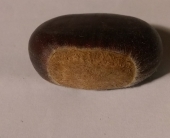
 2
2




Starting on developing a 10 acre permaculture homestead in a sub-urban area. see http://www.my10acres.info








Starting on developing a 10 acre permaculture homestead in a sub-urban area. see http://www.my10acres.info
 2
2




Buy Our Book! Food Web: Concept - Raising Food the Right Way. Learn make more food with less inputs
Off Grid Homesteading - latest updates and projects from our off grid homestead








My project thread
Agriculture collects solar energy two-dimensionally; but silviculture collects it three dimensionally.




Cj Verde wrote:Dale, what about the thermal mass of the water helping? I know Bill Mollison has suggested grapes would do well in chinampas because the would be less likely to frost.
 1
1




 2
2




"You must be the change you want to see in the world." "First they ignore you, then they laugh at you, then they fight you, then you win." --Mahatma Gandhi
"Preach the Gospel always, and if necessary, use words." --Francis of Assisi.
"Family farms work when the whole family works the farm." -- Adam Klaus




The ultimate goal of farming is not the growing of crops, but the cultivation and perfection of human beings. - Masanobu Fukuoka




Starting on developing a 10 acre permaculture homestead in a sub-urban area. see http://www.my10acres.info








 1
1










Starting on developing a 10 acre permaculture homestead in a sub-urban area. see http://www.my10acres.info










Starting on developing a 10 acre permaculture homestead in a sub-urban area. see http://www.my10acres.info




My project thread
Agriculture collects solar energy two-dimensionally; but silviculture collects it three dimensionally.




Starting on developing a 10 acre permaculture homestead in a sub-urban area. see http://www.my10acres.info




Zone 5/6
Annual rainfall: 40 inches / 1016 mm
Kansas City area discussion going on here: https://www.facebook.com/groups/1707573296152799/




Dan Grubbs wrote:Maybe this has already been thought of since this is an ancient technique, but I wonder if there's any wisdom in these systems to selecting the corner trees to provide a canopy over the canal portion to reduce evaporation so your water levels can remain more consistent.
My project thread
Agriculture collects solar energy two-dimensionally; but silviculture collects it three dimensionally.




 1
1




Scott H.
Check out my house project!




Starting on developing a 10 acre permaculture homestead in a sub-urban area. see http://www.my10acres.info
















Brian Cady wrote:Jerry Ward, does joining the town's wetlands-delineating comission make sense? Is it volunteer-run?
Starting on developing a 10 acre permaculture homestead in a sub-urban area. see http://www.my10acres.info




Success has a Thousand Fathers , Failure is an Orphan
LOOK AT THE " SIMILAR THREADS " BELOW !









List of Bryant RedHawk's Epic Soil Series Threads We love visitors, that's why we live in a secluded cabin deep in the woods. "Buzzard's Roost (Asnikiye Heca) Farm." Promoting permaculture to save our planet.
 2
2




 2
2




Starting on developing a 10 acre permaculture homestead in a sub-urban area. see http://www.my10acres.info
 2
2









|
So it goes - Vonnegut
Rocket Mass Heater Resources Wiki
https://permies.com/w/rmh-resources
|




